04/21/2023
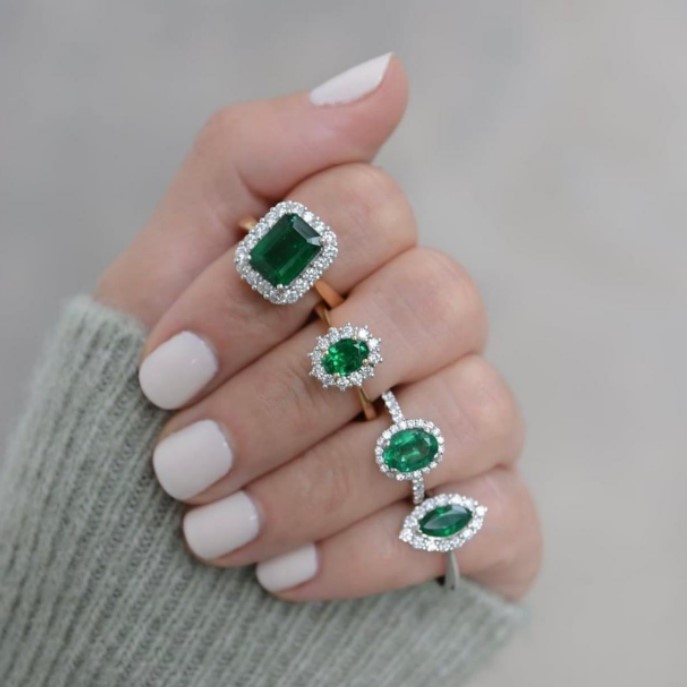
“There is no such thing as too many diamonds” should be the slogan for Halo engagement rings, for sure.
In a super simple and quick description, these rings feature a center diamond surrounded by a “halo” of smaller diamonds or gemstones. This setting not only looks gorgeous, but it also offers benefits that many couples desire. For example, halo settings can make a center stone look up to half a carat larger, which means you can choose a smaller stone without sacrificing perceived size.
Today, halos with smaller diamonds surrounding one large center stone have surged in popularity and can accommodate any diamond or gem shape a couple wants, still reminiscent of the original architectural designs of the Art Deco movement but with modern flair. Halos continue to evolve into bold shapes and asymmetrical patterns, including double-halos and our vintage-inspired engagement rings.
As we just stated in the title, halo engagement rings are currently a popular choice among brides-to-be. Many of the halo rings available today showcase a contemporary twist to the original design. However, the double halo pattern and vintage-inspired pieces with milgrain detailing still radiate the charm of the Art Deco era. To sum up, the halo is an easy way to make any center stone look larger; they offer bold and dramatic sparkle with the addition of pave stones and they complement a variety of diamond shapes.

As with all diamond options today, you can choose between a lab grown halo or a natural diamond halo. As you must already be aware, lab grown diamonds look and feel the same as a natural diamond but are environmentally friendly and come at great prices. The halo along with other accent diamonds can be natural or lab grown diamonds, as per your preference.
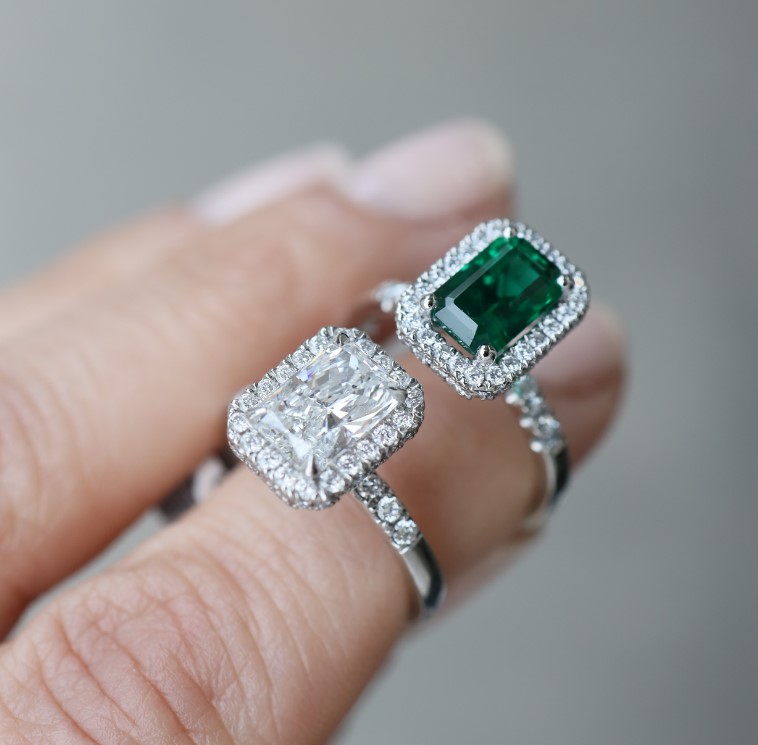
The Center Stone: The center diamond can come in any shape you love. Round and princess-cut center stones are classics, but you can also choose ovals, emerald-cut, cushion, pear, and marquise diamonds. It's really up to you.
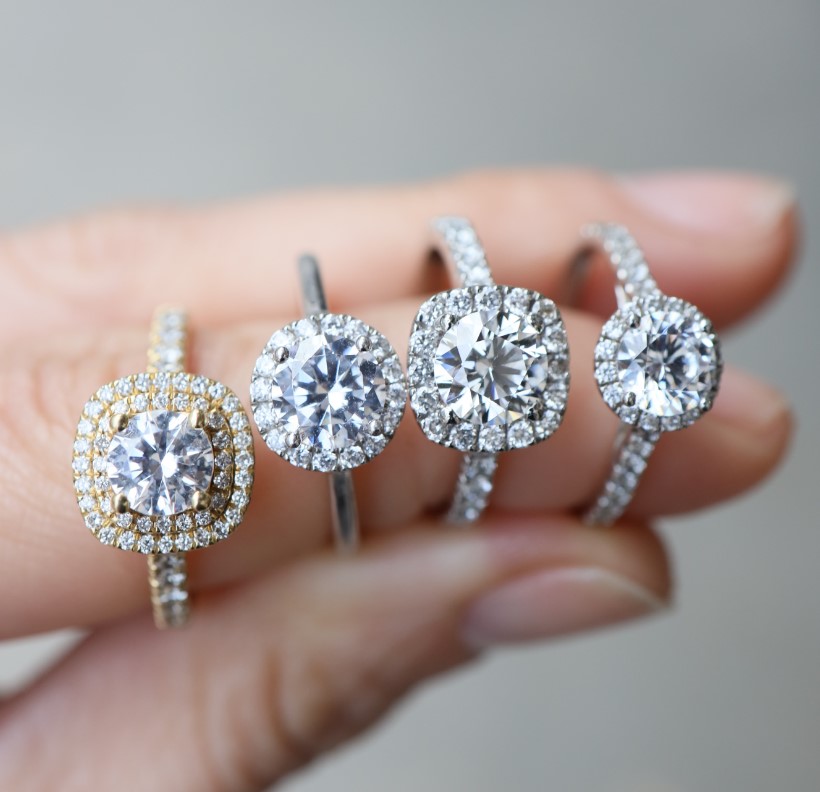
Number of Halos: You can have a single, double, and even a triple halo. A double halo is two rows of accent stones circling your center stone and so on. Each row creates the illusion of a bigger diamond, so more rows mean more sparks.
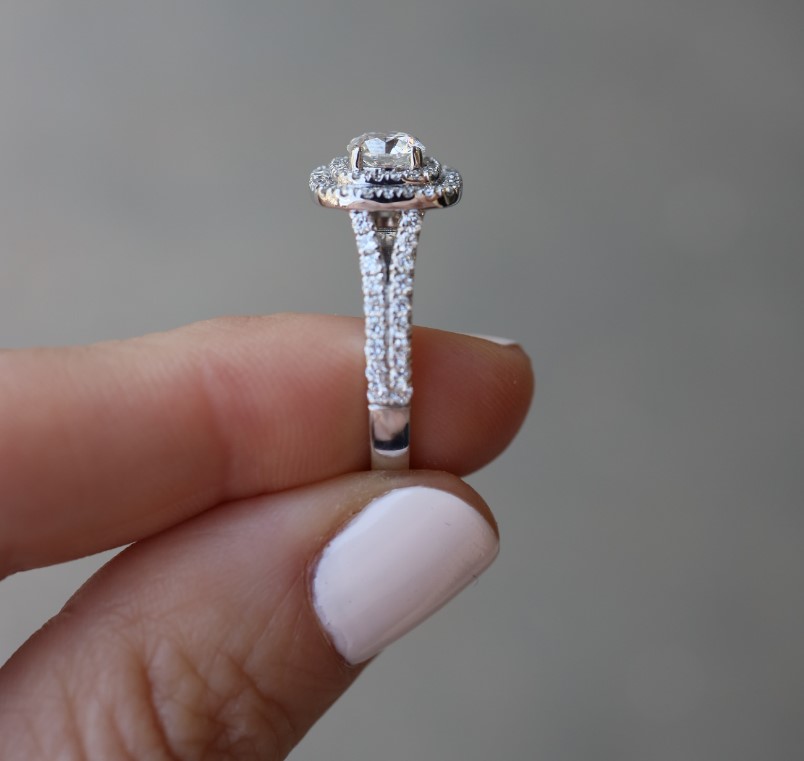
Shank: The shank of your halo diamond engagement adds a lot to the overall look, feel, and style of your ring. The shape and thickness of the shank will also add to the aesthetic of your ring. If you want even more sparks on your ring, look for a shank that has diamonds in it. And if that´s not enough, you might consider getting a split shank—this is when the shank is split into two or more narrower bands, and even each band can have diamonds as well.
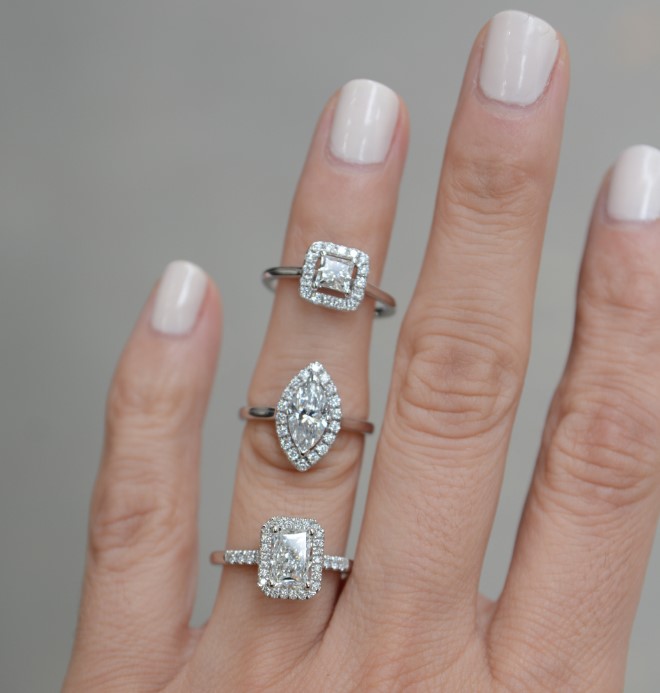
Flush or Floating: A flush halo setting is where the center stone is flush with the halo itself. A floating halo means the center stone is held apart and above the halo by its prongs. This creates space between the surrounding halo and the center stone. This is really a matter of preference and the look you like.
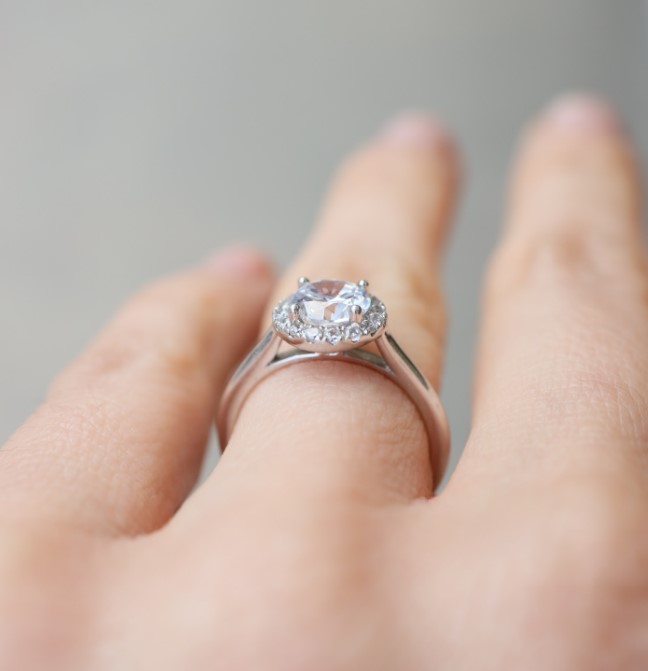
Prong or Bezel: Another design element to consider is a prong or bezel style setting. Prongs are simply the little metal claws that hold the center stone in place. A bezel style is a band of metal that sits between the center stone and the halo.
Halo rings have been around for centuries, and its origin can be traced back to Europe’s early Georgian era, which lasted from 1714 to 1837. Its demand remained constant even throughout the Victorian era, from 1837 to 1901, when coloured gems were often used as center stones to depict the beauty of a flower.
Since then, the classic halo setting was seen in and out of fashion. However, its resurgence was witnessed during the Art Deco era of the 1920s, where geometric patterns and symmetry became a pivotal part of the art deco aesthetics. Architecture wise, you can think of the Chrysler Building in New York or London´s Hoover Building. This was also reflected in several of their jewellery designs that frequently featured a center stone surrounded by concentric circles.
Like many fashion trends, engagement ring popularity ebbs and flows with the socio-economic tides. Opulence fell out of fashion during the Great Depression, and so too did the halo. The halo emerged during the Hollywood Glamour (1930s-1940s) period, but again dwindled in popularity as WWII began and resources grew scarce. Then, once again, the halo had a small resurgence in the 1960s when art deco engagement ring styles came back into popularity. Once more, the halo fell out of style: few halo styles existed throughout the 1970s, 1980s, and 1990s. Although thinking about it, in 1981 there was someone who put this type of design on everyone's lips: Princess Diana. It wasn’t until that magical moment that Diana slipped the Garrard sapphire ring on her finger for that engagement portrait of her and Charles that the halo engagement ring achieved legendary status.